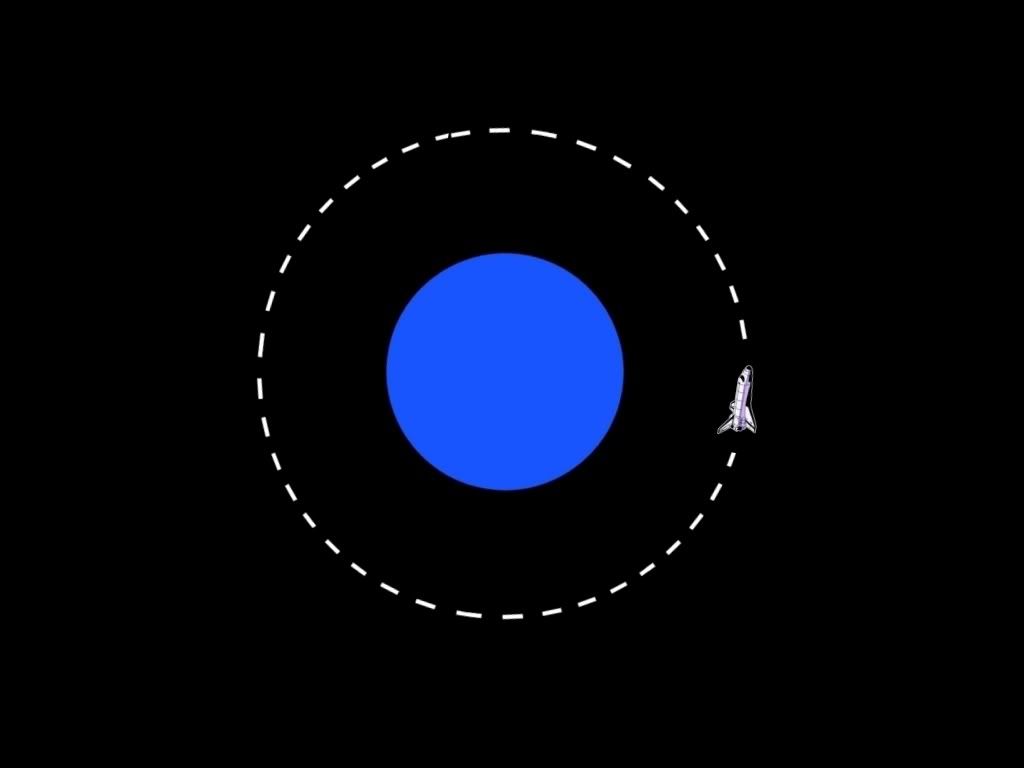Results 121 to 130 of 140
-
06-04-2009, 06:29 PM #121Banned User

- Join Date
- May 2008
- Gender

- Posts
- 6,786
-
06-04-2009, 06:33 PM #122
-
06-04-2009, 06:39 PM #123
@brownprose
Ok bro here it is...
Shuttle is orbiting around the earth in a fairly circular orbit of about 310 kilometers (highest point of orbit, called the apoapsis) and 302 kilometers (lower point, the periapsis). Yes, it's not a perfect circle, but near perfect.

Shuttle begins its prograde burn. It doesn't gain any speed at this point. Instead, it basically will introduce changes to it's orbital path...

...as shown by the green dashed line here...

...and a few minutes later, the orbit still elongates...

...and a few minutes later, the orbit still keeps elongating...

...still a few minutes later, the orbit still keeps elongating...until it becomes a long ellipse.

So, basically, if it keeps burning, it still simply just increases the apoapsis, but the periapsis remains the same (at 302 kilometers)...meaning, the apoapsis may be as long as the distance from the earth to the moon (HINT: Now you know how to reach the moon! hehehe), but the periapsis still remains to be nailed down at 302 kilometers.
This is why, any body floating out in space, is always "anchored" to some other influential large object. Like the moon is to the earth, and the earth is to the sun, and the sun is to it's sister stars, and this cluster to the milky way, and the milky way to the local group, and the local group to the supercluster...and so on.
Now let's go back to the last diagram.
Even if the shuttle suddenly stops its engine at this point (say, it has run out of fuel), that green orbital path will still be its new orbit. So perhaps, several hours from now, the shuttle will be here...

...and many more hours later, it will just coast back until it speeds on down back to an altitude of 302 kilometers from the earth's surface, and then go around again. The only time it can circularize this orbit, is if it does a retrograde burn back at the periapsis point.
-RODIONLast edited by rodsky; 06-04-2009 at 06:47 PM.
-
06-04-2009, 06:41 PM #124
That's Carl Sagan talking.
 Yes I find it entertaining. Perhaps others won't.
Yes I find it entertaining. Perhaps others won't.
The whole COSMOS series spanning from Episode 1 to Episode 13, hosted by Sagan, is a pretty informative series. Which is why, even though it was made back in 1981, it's still very popular these days.
-RODION
-
06-04-2009, 06:42 PM #125Infractions: 0/3 (6)

- Join Date
- Sep 2006
- Gender

- Posts
- 7,290
rodsky, 5 years ko trabaho sa NASA pero wa ko kasugat aning questiona da... kuyaw sad ni

-
06-04-2009, 06:46 PM #126Banned User

- Join Date
- May 2008
- Gender

- Posts
- 6,786
-
06-04-2009, 06:53 PM #127
how brilliant rodsky! can't understand any better than this. thank you kaayo. now i can travel to mars!
-
06-04-2009, 06:56 PM #128
-
06-04-2009, 07:01 PM #129
You're welcome bro. Honestly, the farthest I've gone in Orbiter is the moon, kay it's only 2-3 days away. With currently available human-capable thrust, Mars is over 9 MONTHS away (yikes), so even with accelerated time in a simulation, it would still take A WEEK or more to get to Mars, and frankly I don't have that much time to stare in front of the computer

Earth to the moon, and back however, is pretty fun
-RODION
-
06-04-2009, 08:01 PM #130Banned User

- Join Date
- May 2008
- Gender

- Posts
- 6,786
Advertisement
Similar Threads |
|







